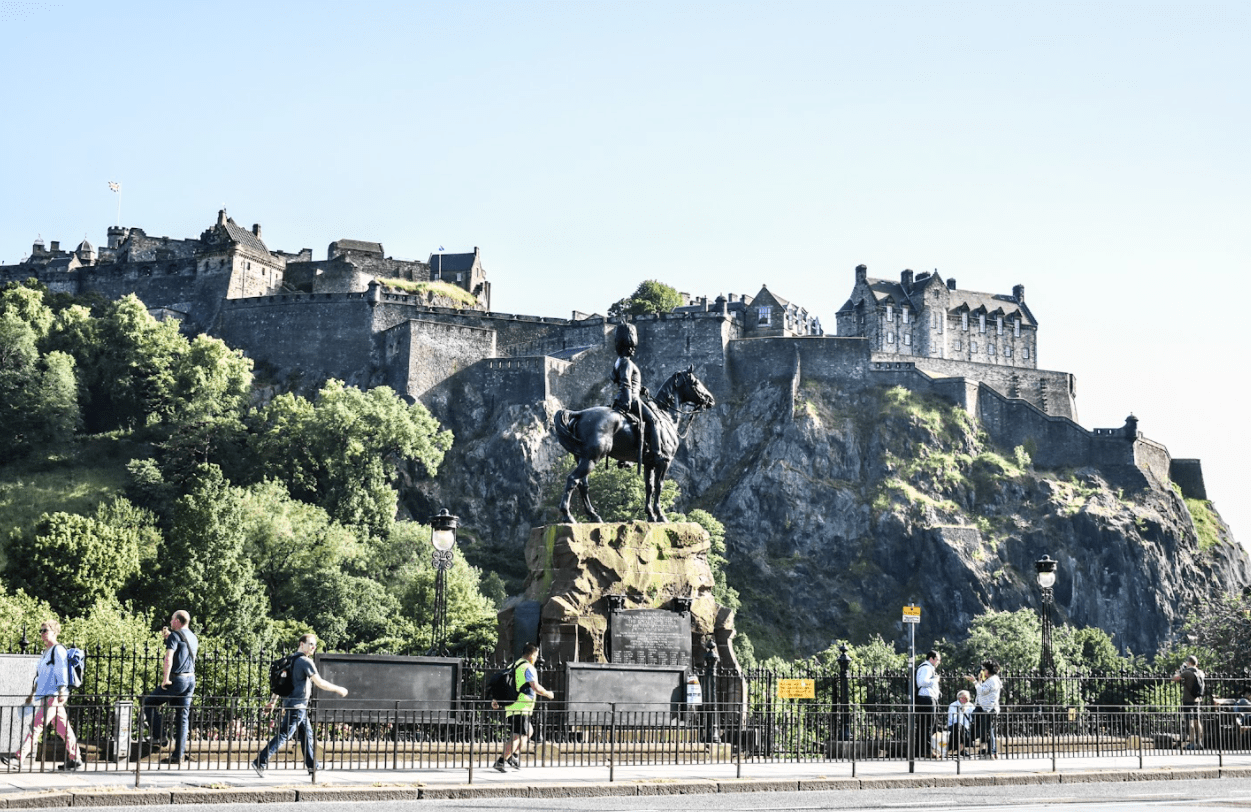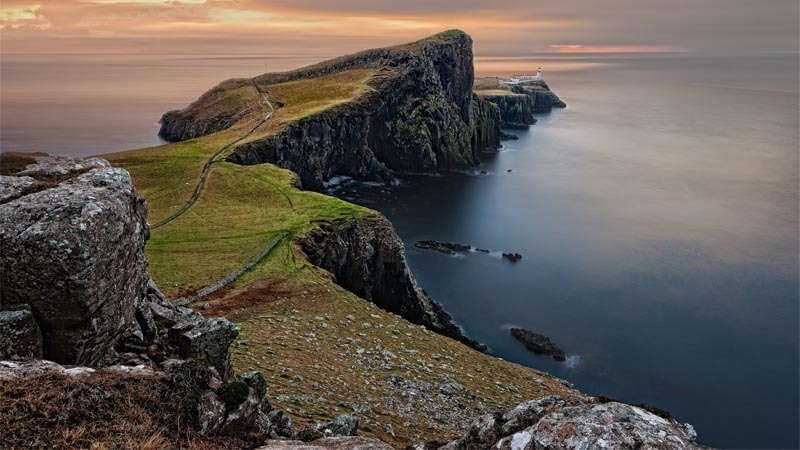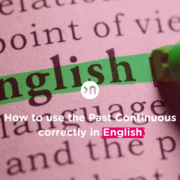6 Curiosities about Scotland that you are going to love
6 Curiosities about Scotland that you are going to love. You already know us; we love travelling abroad and therefore part of our mission is to create language immersion experiences. One of our top destinations is Edinburgh, and today we want to tell you about some of the curiosities of Scotland. We recently told you about 11 reasons to study in Scotland, but today we are going to emphasise some of the curious aspects and legends of this extraordinary country. The best way to learn English is to live surrounded by it, so we hope to incite your curiosity with what we are going to tell you next.
1.The Legend of Loch Ness
A classic, anyone thinking of Scotland has the Loch Ness Monster in mind. This impressive natural site is in the north of the country, and is one of the many lakes that run along the Great Glen.
It has been assumed for many years that there is a monstrous being under the waters of the lake, which they call Nessy.
Why is it believed that a monster inhabits this lake? In the last 100 years, the evidence for its existence has been limited to a series of mysterious sightings. This theory has been supported by photographic evidence, and scientific studies have been conducted that have not revealed the presence of the Loch Ness monster.
There are many people that believe due to the depth and dimensions of the lake, and the underwater caves, the monster can hide anywhere. Be that as it may, the myth persists and is one of Scotland’s tourist interests. In fact, in our summer immersion programme, it is one if the visits we organise.
Loch Ness is one of the many charms of Scotland.
2.The History of the Thistle, the Symbol of Scotland
Do you know how the thistle became the official emblem of Scotland? There are many stories about it. A legend says that during a battle against the Norse, some Scots hid at night in an area surrounded by thistles. The Nordics, with the intention of surprising them, took off their shoes to sneak in undetected to finish off the enemy. What happened, is that a soldier stepped on a thistle and his cries of pain alerted the Scots. Thanks to this, the Norse were defeated.
Another story is that some Danes planned a midnight raid on a Scottish fortress. In this version, they also remove their shoes to catch the people in the castle by surprise. They jumped into the pit and discovered that it was full of thistles. Screams of pain woke up the last Scotsman, and they defeated the Danes.
No matter what the story behind the legend is, the fact that remains is that the thistle became the official symbol of Scotland during the reign of Alexander III in the 13th century. It was first used on silver coins in 1470, when James II reigned, and it was added to the country’s coat of arms in the 16th Century.
There is also an order of chivalry founded by King James V in 1540, known as “The Order of the Thistle”. It was made up of 12 knights and the King. It recalls the story of King Arthur and his knights of the Round Table and there is even a certain parallel between Jesus and the 12 apostles. The motto of this order was “Nemo me impune lacessit”, which means, “nobody harms me without punishment”.
If you have travelled through Scotland, you will have surely seen the thistle on many souvenirs: T-shirts, jewellery, coasters, flags, mugs, stickers… Now you know why.
We can’t think of a better plant to represent the Scottish character, the thistle is strong and invasive, for many, a weed, but it’s actually an honourable symbol of all the people who spread Scottish culture around the world and have more than demonstrated that the Scottish people are strong, courageous and resilient.

3.Great Inventions of History
Did you know that the Scots are responsible for some of the most important inventions in history? How many do you know? Keep reading because we are facing some interesting facts about Scotland.
Scottish inventions innovated and revolutionised medicine, industry, agriculture and science in general and we guarantee that you are using one of them on a daily basis.
If you say that you love watching some of the best series on TV, it’s because one day it was invented by a Scotsman. John Logie Baird, was the engineer and physicist inventor of the first public television system and the first colour tube.
The invention of the telephone was the work of Alexander Graham Bell, he was so fascinated with speech and the ability to hear, that this led him to experiment with ways of transmitting sound electronically.
In 1875, he had already developed a receiver that took electricity from sound. His first communication by phone from him went down in history, “Mr Watson, come here, I want to see you”, he told his assistant. Others were investigating similar lines of work, but it was Bell who first patented his design in 1876.
And do you know who invented the wheels on your car? It was the work of John Boyd Dunlop. Next time you drive, remember its inventor.
The inventions devised by the Scots are numerous: improvement of the steam engine by James Watt in 1765, the invention of penicillin as an antibiotic by Alexander Fleming in the 20th century, chloroform as surgical anaesthesia by Sir James Young Simpson, and the first mammal cloned in 1996 at the Roslin Institute (Dolly the Sheep), among many others.
4.Scotland’s Iconic Animal is the Unicorn
No, we are not crazy, we know that unicorns don’t exist, so breathe. This is one of the curiosities about Scotland which will surprise you the most. Almost every country in the world has an animal as a symbol, but it cannot be compared with this wonderful Scottish mythical beast.
Why is the unicorn the national animal of Scotland? It is not surprising and even more so considering that we are looking at a country that thrives on legends and where ghosts roam cemeteries, castles, where there are forests full of fairies… To think of a mythological being as a national emblem is not so far-fetched. Although we already anticipated that the unicorn did not become a symbol due to its mystical aspect, in fact, when it was added to the coat of arms it was believed that it existed, or had existed.
In ancient times it is described as a large animal with a horn on its forehead, the Greeks believed that it was a being that lived in India, something exotic, but real. In European folklore, the size of the unicorn decreased, and it was depicted as a goat with a lion’s tail or a horse.
Its antlers were believed to have healing properties and in medieval times, objects made from unicorn ivory or horn powder were sold. They were forgeries made from narwhal or walrus tusks. The spiral-shaped narwhal tusk is the origin of the story of the horn that is talked about today.
If the unicorn was chosen as the national symbol of Scotland, it’s because of the values it represents. On the one hand, it is a noble and pure being who uses its power to do good and on the other hand it is a wild and untamed animal, who prefers to die than be captured. According the legends, on a virgin maiden can tame it.
The Scots were reflected in their characteristics, considering themselves fighting people, brave, proud and capable of fighting to maintain their freedom.
So, with the passage of time, the unicorn ended up becoming an emblem which is as important and recognisable as the thistle, and the cross of St Andrew.
The unicorn is believed to have been first used in Scotland’s coat of arms during the reign of William I in the 12th century. Later, in the 15th century when James III reigned, gold coins were made with this engraving.
When James IV also became James I of England, joining the crowns of both countries, the king altered the shield to reflect the change. From this moment, a unicorn and a lion (the national animal of England) appeared. This is still the current representation of the coat of arms of the United Kingdom, although there are two variants. In the Scottish version, the unicorn is on the left and the lion on the right, however in the English version, the animals are the other way round, among other differences.
If you walk through Scotland, you will see unicorns everywhere. In the mercat crosses of Stirling, Edinburgh, Culross, Inverness… Holyrood Palace, Edinburgh Castle and St Giles Cathedral, among many other places.
5.The Oldest Town in Great Britain is in Scotland
Skara Brae is a Neolithic town located in the Orkney Islands. The houses from the Old Age in this village were dug out of the ground to then be surrounded by stones. In this way, a warm and welcoming environment was created.
They are nicknamed “grass houses”, since the grass grew around the construction and sometimes covered it. The image is really beautiful and spectacular, and also, it helped keep the heat in the home.
This town dates back to 3180 BC and sheltered a community for more than 600 years. This implies that the town is older than the pyramids of Egypt.
The reason why the people left this village is unknown, but you have the opportunity to visit Skara Brae and imagine what life would be like in this extraordinary place. Experiencing a journey through time is in your hands.

6.Edinburgh is the city with the most protected buildings in the world
Did you think this would be the case? The world is a big place and we didn’t think that this beautiful city was so within our reach in architectural terms.
Edinburgh has a myriad of listed buildings that cannot be modified or destroyed due to their cultural and historical significance. If you have visited this majestic city, you will have proof of the ornamental beauty with every step you take. Holyrood Palace, Edinburgh Castle that crowns the top of the Royal Mile and the Walter Scott Monument, among other wonders.
Speaking of must-see places, read this article about What to see in Edinburg: 10 places to visit and fall in love.
So here is our tour of the curiosities of Scotland. Can you think of any that we haven’t raised? We’re all ears.










Leave a Reply
Want to join the discussion?Feel free to contribute!